
Razer Blade 14, 15 and 17 boosted with 12th-gen Intel, AMD Ryzen 6000 CPUs, latest Nvidia RTX GPUs at CES 2022
This story is part of CES, where CNET covers the latest news on the most incredible tech coming soon.
On the heels of AMD and Nvidia's CES 2022 announcements of their latest high-performance processors and graphics chips, Razer revealed which of those components you can expect to find in the next round of updates to its Razer Blade gaming laptops.
All of the models have some updated design elements such as a new keyboard with larger keys, laser-cut speakers, thinner profiles thanks to a redesigned hinge, and rubber feet made to improve cooling. Wi-Fi 6E, Bluetooth 5.2, HDMI 2.1 and a 1080p webcam with IR for facial recognition will be found across the lineup, too. I'm excited about what you can get in these models and the fresh display options across the Blade lineup.
At the top of the lineup in size, performance and price is the Razer Blade 17. It will have up to the Nvidia GeForce RTX 3080 Ti mobile GPU, which can outperform Nvidia's desktop Titan RTX card; up to 32GB of DDR5 memory, upgradeable to 64GB; and a 1TB PCIe NVMe upgradeable to 4TB SSD as well as an open M.2 slot. There are two 12th-gen Intel processor options: a 14-core Core i7-12800H or a 14-core Core i9-12900HK.
Razer is offering three 17.3-inch display options depending on the processor you go with: 1080p with a 360Hz refresh rate and 100% sRGB color gamut, QHD with a 240Hz refresh rate with 100% P3 color gamut or a 144Hz UHD touchscreen with 100% Adobe RGB color gamut. The laptop has eight speakers inside, so whether you're getting it for gaming, content creation or both, you should have incredible sound to go with whatever display you choose.
The Razer Blade 17 starts at $2,700 and will be available for preorder at the end of January direct from Razer. The starting price converts to approximately £2,010 or AU$3,770.

The Razer Blade 15 also pairs Intel with Nvidia.
RazerThe 15.6-inch Razer Blade 15 is essentially a smaller version of the Blade 17 with similar components and display options. Both models have UHS-II SD card readers, which is a boon if you want to quickly copy photos and video from a camera without reaching for a reader.
- Intel Core i7-12800H or Core i9-12900HK
- 16GB or 32GB of DDR5 memory, upgradeable to 64GB
- 1TB PCIe Gen 4 NVMe SSD, upgradeable to 2TB
- Up to Nvidia GeForce RTX 3080 Ti graphics
- 360Hz FHD or 240Hz QHD displays or UHD display with 100% P3 color gamut
The new Razer Blade 15 starts at $2,500 and will be available for preorder at the end of January direct from Razer.

The Razer Blade 14 has AMD inside.
RazerStarting at $2,000, the Razer Blade 14 is built around the latest AMD Ryzen 9 6900HX processor. You can get it paired with either an Nvidia GeForce RTX 3060, RTX 3070 Ti or RTX 3080 Ti mobile graphics. It comes with 16GB of DDR5 memory onboard and no room to add more later. A 1TB PCIe Gen 4 NVMe SSD is standard but you can upgrade to 2TB.
Razer offers only two 14-inch display choices with the Blade 14, either an FHD screen with a 144Hz refresh rate and 100% sRGB color gamut or a QHD display with a 165Hz refresh rate and 100% P3 color gamut. The new Razer Blade 14 will also be available to preorder direct from Razer at the end of January.
Source
Tags:
- Razer Blade 14 15 And 17 Boosted With 12th Gen Intel I7
- Razer Blade 14 15 And 17 Boosted With 12th Gen I7
- Razer Blade 14 15 And 17 Boosted With 12th Gen F 150
- Razer Blade 14 15 And 17 Boosted With 12th Gen Laptop
- Razer Blade 14 15 And 17 Boosted With 12th Day Of Christmas
- Razer Blade 14 15 And 17 Boosted With Vaccine
- Razer Blade 14 15 And 17 Boosted Brad
- Razer Blade 14 15 And 17 Gcf
- Razer Blade 14 Case
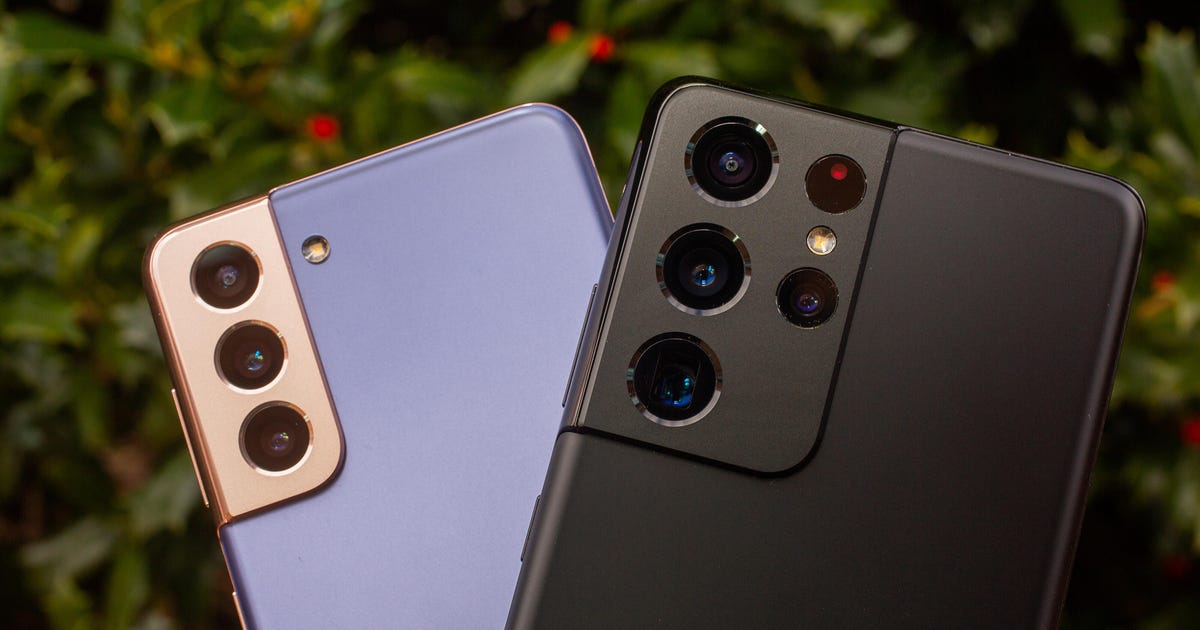
S21 Ultra vs. S20 Ultra: Samsung Galaxy camera shootout
The standout feature of last year's Samsung Galaxy S20 Ultra was its camera, a five-lens setup that could shoot at a crazy 100x magnification. A year later, the Galaxy S21 Ultra is Samsung's newest flagship. It improves on its predecessor in numerous ways: A gorgeous matte back, an even more gorgeous 3,200x1,440-pixel display that lets you scroll in QHD and 120Hz for the first time, and a customary processor upgrade.
But just like last year, those looking into buying Samsung's new crown jewel are mostly doing so for the camera. Updates this year include dual telephoto lenses, 4K video60 frames per second from all rear cameras, and better zoom-stabilization software. So just how much more Ultra is the S21's photography?
Standard
It'll come as little surprise that there's minimal difference between the two cameras when you're shooting in optimal lighting conditions.
In this shot you'll see the colors on the beer can are similarly vibrant, and the same level of detail is captured. The only difference is in the aperture: The background looks a little more blurred in the S20 Ultra as compared to the S21 Ultra. I personally prefer the latter shot, but that's very much a taste thing.
What about less conducive lighting conditions? I shot these flowers under my living room light, which typically makes for some ugly yellow tinting. The S21 Ultra dealt with this lighting far better, neutralizing the yellow shade and producing a shot with better white balance. It also captured better detail on the flower itself.
One issue I found with the S20 Ultra was that, compared to the iPhone 12 Pro, it struggled with extreme close-up shots. It often couldn't focus properly, and other times colors would be overwhelming.
I recruited yet another flower for help here, and found the S21 Ultra a slight improvement. The red in the S20 Ultra shot is just completely overpowering, whereas it's bearable -- but still strong -- on the S21 Ultra. More data was shot too, as you'll see from the details on the flower's petals.
As for ultrawide-angle shots, I found the cameras to be largely comparable. The S20 Ultra sometimes suffered from blown highlights at times when the S21 Ultra wouldn't. That said, the S20 Ultra's ultrawide shots also looked more vibrant.
See how the colors pop more here on the S21 Ultra. But the processing around the building's edges results in harsher lighting.
That difference is more evident here, with that harsh sun in the top right being better handled by the S21 Ultra's ultrawide-angle sensor.
Portrait
If the S21 Ultra regresses anywhere, it's in Portrait shots. (Which are now called Portraits, as opposed to Samsung's previous "Live Focus" branding.)
In my testing, the S21 Ultra tended to cool the tone down and capture more detail. It's bokeh, which mimics the depth-of-field effects found in DSLR cameras, is more blurred and creamy. This isn't always bad: See these shots below of CNET Science Editor Jackson Ryan. I much prefer the S20 Ultra shot, as it looks softer and less artificial. But the S21 Ultra has captured more of Jackson's facial features, like his freckles, and more detail in his beard.
This is a nice change. In the past, critics (myself included) have marked down Samsung's Portraits due to their skin-smoothing software, which can result in fake, brushed Portraits.
But more often than not, I found the S21 Ultra's Portraits to be more unsightly than the S20 Ultra's. Look how artificially blue my friend Dan's skin looks here, and note the sunny glow in the S20 Ultra that's absent in the S21 Ultra. The S21 Ultra is a little sharper, but just looks flat compared to the S20 Ultra.
It's less of a problem with selfie Portraits. In the below comparison I look softer in the S20 Ultra shot, and the S21 Ultra's sharpness brings out my monobrow. You love to see it. But assuming you have less facial hair than me, this won't be an issue. Here it's a matter of taste, since the unsightly blue tint isn't as much of a problem.
Zoom
Let's move on to why we're really here. Samsung has been investing big design and marketing dollars into its phones' zoom function over the last year, and that's the case with the S21 Ultra too. Like last year's S20 Ultra, it has 100x Space Zoom. Improvements come with a 3x optical zoom, and a lock feature that makes taking pictures at high zoom much easier.
That 3x optical zoom actually makes a big difference, although it's a qualified one. As you can see, not all 3x magnifications are created equal. The S21 Ultra's 3x zoom is actually less magnified than the S20 Ultra's: These shots of my old and ill-kept Game of Thrones books were taken from the same distance at 3x zoom, yet they look far closer on the S20 Ultra. But they also look clearer and less blurred on the S21 Ultra.
Extending out to 10x zoom, the difference actually shrinks. Both phones do a crazy good job here. The below photo was taken at the standard magnification.

Now zooming in 10x, you'll quickly notice how much more dynamic the S21 Ultra's shot is. You may not be able to tell on site here, but looking at the raw files I noticed the S20 Ultra is also more grainy than the S21 Ultra. Again though, both Samsung phones do well at 10x zoom.
However, the chasm widens once again when you begin to zoom further than 10x. See that blue building in the background of this shot? Let's zoom in a big ol' 30x.

The building is adorned with artwork of an Australian kookaburra bird. Apologies for the weird angle, but taking identical shots at 30x zoom is hard! In any case, the S21 Ultra's software is working overtime here and it shows. Both are impressive -- most phones can't zoom this far -- but the S21 Ultra's shot is sharper and with better colors.
Below is another 30x comparison. You'll see that the S20 Ultra's shot is more blurry, has less contrast and captured less detail.

And finally, the ultimate flex: 100x zoom. Of all the 100x-zoom shots I took, this one exemplifies the difference the best. First, here's the scene I was working with:

Now zooming as far as both phones can go, we see both do frankly insane jobs at capturing the moon. The S21 Ultra, though, did better. It's more luminescent and impressive.
Night time
The S21 Ultra performs better at night than its predecessor, but it's not without flaws. Generally speaking, it'll capture more light in its low-light photos -- but at a cost.
This shot illuminates the issue. It was taken with Night Mode off. The S21 Ultra took the better photo, capturing more light and more detail, which you can see in the clouds and on the fencing behind the umbrella. But along with that comes some ugly noise, which is particularly bad in the top left of the photo.
Now let's turn Night Mode on. Here I can say the S21 Ultra is an unqualified winner. There are noise issues, particularly on the wall on the right of the photo, but it's worth it for the extra illumination and sharpness.
But there are times where Night Mode can overdo it. Below is a scene with minimal natural light.

With Night Mode turned on, the S21 Ultra technically does a better job at flooding the scene with light. But it goes too far, resulting in a harsh shot. The S20 Ultra's Night Mode added less light, but produced a more natural-looking photo.
Still, generally speaking the S21 Ultra was a minor improvement over its predecessor. The comparison below is illustrative of what you'll mostly find: The S21 Ultra is a bit sharper, brighter and better at night.
Small improvements
Samsung made some improvements to the S21 Ultra's video camera, too. Both can shoot video in 8K, but now the S21 Ultra can shoot 4K 60 frames-per-second video from all of its rear cameras, notably including its ultrawide angle shooter.
We'd need a whole new article -- or video rather -- to compare the video capabilities of the two phones. I'll just say in my (more limited) testing of the video capabilities, the S21 Ultra's cameras did better at night, with improved low-light autofocus and also better processing of highlights, which can get blown out on the S20 Ultra at times.
All in all, the S21 Ultra is a solid bump up from its predecessor in most photographic ways, especially zoom, though you may personally prefer the S20 Ultra's take on Portrait modes. This is particularly impressive considering the S21 Ultra ($1,200, £1,149, AU$1,849) actually launched at a lower price than the S20 Ultra ($1,400, £1,199, $1,999).
The Galaxy S21 Ultra is Samsung's flagship 2021 phone, its biggest and best of the 2021 Galaxy S21 line that was originally released in the first quarter of that year. We loved its two telephoto cameras, spectacular 6.8-inch screen and support for Samsung's S-Pen stylus (though you'll need to buy that separately). While it's comparatively heavy and lacks a MicroSD expansion slot, you can find it marked down from its original $1,200 base price.
The Galaxy S20 Ultra was Samsung's top phone until the Note 20 Ultra was released later in 2020. We liked its 5x optical zoom camera and S Pen support, but felt it was a bit too heavy and expensive compared to other models in the 2020 Galaxy S line.
Source
Tags:
- S21 Ultra Vs S20 Ultra Samsung Galaxy Camera Shootout At The Ok Corral
- S21 Ultra Vs S20 Ultra Samsung Galaxy Camera Shootout Lake
- S21 Ultra Vs S20 Ultra Samsung Giá
- S21 Ultra Vs S20 Note
- Galaxy S21 Ultra Vs S20 Note Ultra
- S21 Ultra Vs S22 Ultra
- S21 Ultra Specs
- Samsung S21 Ultra Specifications

TikTok dominated 2021 as the year's hottest app
2021 had its share of unconventional moments, but mobile apps continued to be reliable tools for work, entertainment, communication and shopping. While people spent leisure time using TV streaming services like Netflix or scrolling through social media sites such as Instagram, they also stayed connected with Zoom and Facebook. But TikTok solidified itself as the most popular app of the year.
Apptopia compiled its list of the most downloaded apps of 2021, and the video-sharing app grabbed the top spot among global users. Apptopia gleans data from mobile app stores to examine which areas have the most growth and which brands raked in the highest number of downloads. Analyzing information from Google Play and iOS' App Store, the company determined the top 10 mobile apps in the U.S. and the world. ByteDance-owned TikTok sits in first place on both charts.
According to Apptopia's global list, TikTok had 656 million downloads in 2021. It's followed by Instagram (545 million), Facebook (416 million), WhatsApp (395 million), Telegram (329 million), Snapchat (327 million), Zoom (300 million), Messenger (268 million), CapCut (255 million) and Spotify (203 million). It's noted that ByteDance is also the parent company for CapCut, a free video editing app that enables users to create and edit clips -- which can then be exported to TikTok.
In the U.S., TikTok's 94 million downloads outranked Instagram's 64 million. But the rest of the country's top 10 include Snapchat (56 million), Cash App (56 million), Zoom (52 million), Messenger (51 million), Facebook (47.3 million), WhatsApp (47.2 million), YouTube (47 million), and HBO Max (45 million). Domestically, HBO Max beat its TV streaming competitors and bumped Netflix to No. 2.
Compared to Apptopia's 2020 findings, TikTok still ranked No. 1 but experienced a higher download volume last year globally. But 2021 saw the video app's U.S. downloads increase by 6 million. If you're looking to get in on the wave, check out CNET's handy guide to joining TikTok.
Read more: 20 viral TikTok products to add to your shopping list
Source
Tags:
- Trending On Tiktok 2021
- Trends On Tiktok 2021
- Best Of Tiktok 2021
- How Many People Have Tiktok 2021
- Year On Tiktok 2021
- Tiktok Most Followed 2021
- Best Of Tiktok 2021
- How Many People On Tiktok 2021
- Trends On Tiktok 2021
- New Tiktok Trend 2021
- Tiktok December 17 2021
- Tiktok Most Followed 2021

Student Loan Forgiveness: How to Apply to Get Up to $20K in Student Debt Canceled
If you owe money on student loans, relief could be coming your way as up to $20,000 of that debt could soon be forgiven. Additionally, if you made payments on your student loans during the moratorium, you can request a refund from your loan servicer. The Biden administration has extended the pause on repaying student loans until January 2023.
While some borrowers may automatically see their debt forgiven by the Department of Education without taking any additional steps, most will need to apply for forgiveness. We'll explain below.
Keep reading to find out if you're eligible for the student loan debt forgiveness plan and how to apply. Additionally, watch out for student loan forgiveness scams by spotting these red flags.
First, find out if you're eligible for student loan debt forgiveness
Under President Joe Biden's plan, the Department of Education will cancel up to $10,000 in federal student loan debt for individual borrowers who make below $125,000 per year or less than $250,000 for married borrowers or those who are heads of households.
You may also be eligible for an additional $10,000 in relief if you received federal Pell Grants while enrolled in college.
You may need to fill out an application for student loan debt forgiveness
Whether you need to apply for student loan debt forgiveness depends on if the Department of Education already has your income information -- this group of borrowers mostly includes those who are enrolled in income-driven repayment plans.
If the department does have your income data, it will automatically cancel your eligible debt. You won't need to do anything further.
If the department doesn't have your income details, you must complete a new application from the Biden administration to supply the information the department needs to cancel your debt.

You could be eligible for $10,000 to $20,000 in student loan debt forgiveness.
James Martin/CNETWhen will the debt forgiveness application be available?
In an Aug. 26 press briefing, National Economic Council Deputy Director Bharat Ramamurti said that the application for student debt forgiveness will go live in early October. He also said that after borrowers complete their applications, "They can expect relief within four to six weeks."
"Borrowers are advised to apply by roughly Nov. 15, in order to receive relief before the payment pause expires on Dec. 31," Ramamurti said
You can choose to be notified when the application becomes available by going to the Department of Education subscription page and signing up to receive "Federal Student Loan Borrower Updates," the first checkbox in a long list of education topics.
We'll update this story with more details when the application is available.
For more money details, here's what to do if you can't pay your credit card bills on time. Also, here's what could happen to your credit score if your student loans are forgiven.
Source
Tags:
- Applying For Student Loan Forgiveness
- Apply For Federal Student Loan Forgiveness
- Student Loan Forgiveness How To Apply
- Student Loan Forgiveness How To Qualify
- Student Loan Forgiveness How Many Years
- Student Loan Forgiv eness For Nurses
- Student Loan Forgiveness Ontario
- Student Loan
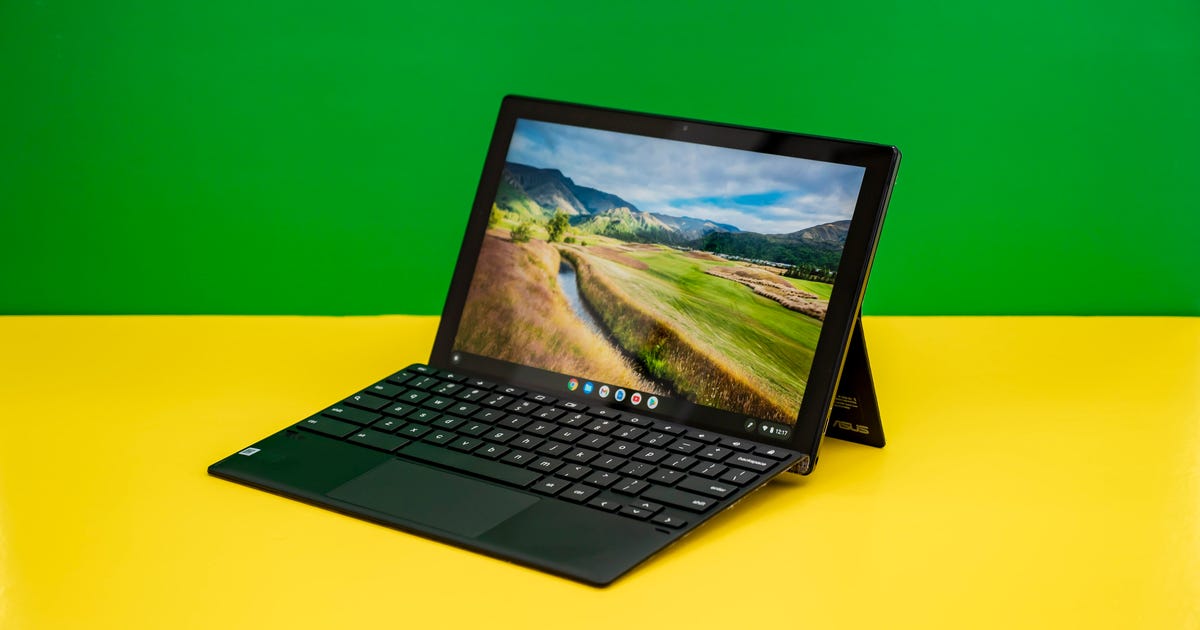
Chromebook vs. Laptop: What Can and Can't I Do With a Chromebook?
Chromebooks are a tempting option for the budget-conscious, especially if you're looking for a new computer that you can easily take on the go. The main thing to keep in mind when comparing a laptop to a Chromebook is that it's not an apples-to-apples comparison. The main difference, besides price, is the operating system. If you're used to using Windows or MacOS, Google's minimalist Chrome operating system may not have all the functionality you need. But then again, maybe it does, and with some Chromebooks even dipping below $300, maybe you stand to save a bundle of cash by nixing the features you don't use anyway.
Read more: Best Laptop Under $500 for 2022
When Chromebooks first arrived in 2011 they were routinely derided -- and rightfully so -- for their limited functionality and reliance on a consistent internet connection. The operating system turned 10 years old last year and today's Chromebooks, which come in both laptop and two-in-one designs, are far from where they started, but some things haven't changed, and you might not be willing to work with the limitations they do have. (Also, if you don't feel like reading this and would just rather experience Chrome OS, here's how to temporarily run it on any laptop using an inexpensive USB flash drive you probably already have lying around.)
What can and can't I do with a Chromebook?
When Chrome OS launched it was essentially Google's Chrome web browser. For those used to an operating system like Windows and Mac, it made the average Chromebook seem like little more than a laptop that runs a web browser and that's all.
Even if the Chrome OS never matured beyond that, the fact is quite a lot can be done entirely on the web these days. Take stock of everything you do on a daily basis and you may find there's nothing you can't accomplish with Chrome at its most basic level.
That said, a Windows laptop or MacBook can run the Chrome browser as well as other software supported by those operating systems. Even if you don't immediately need a particular piece of software, it's nice to have the option. Plus, if you're shopping for a Chromebook for remote learning with Google Classroom, a Mac or Windows PC will work as well.
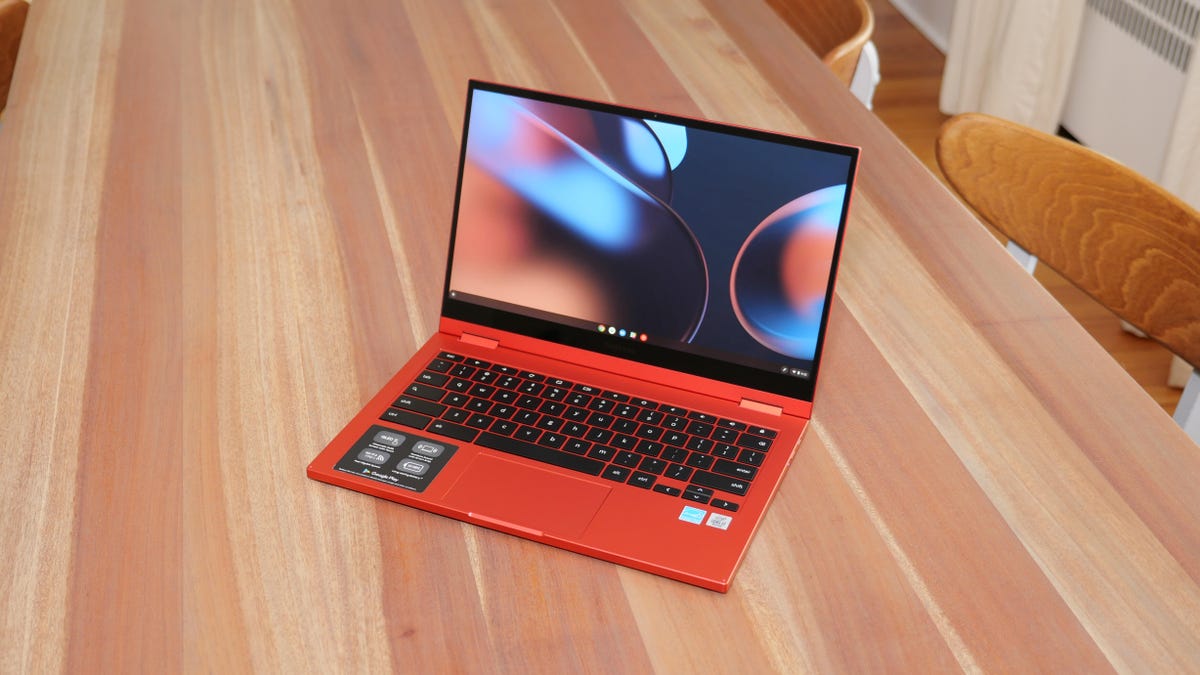
Samsung's Galaxy Chromebook 2 is a premium model with better performance than most.
Josh Goldman/CNETAlong those lines, Chromebooks are not natively compatible with Windows or Mac software. Businesses can use VMware on Chromebooks to run Windows applications but that's not an easy option for most Chromebook owners. However, there is support for Linux software, plus current models can run Android apps and there are also web apps that are available through Google's Chrome Web Store. Also, if you're considering a Chromebook as a secondary device, it's possible to use Windows or Mac software on a Chromebook by using Chrome's Remote Desktop feature and it actually works really well!
Read more: How to Buy a Laptop to Edit Photos, Videos or Other Creative Tasks
One of the big hurdles here for many people is access to Microsoft Office. You can't install the full Windows or MacOS desktop versions of Office software on a Chromebook, but you can use Office 365 online and install the Office progressive web apps. PWAs act just like mobile apps, so you can use them offline, get notifications and pin them to the taskbar. But generally speaking, if you need or want a specific Windows or Mac application -- and there's no suitable web or Android app substitute and VMware isn't an option -- don't get a Chromebook.
Also, if you need advanced photo- and video-editing capabilities, you'll want a Windows, Mac or Linux laptop. Basic photo and video editing is fine, but Chromebooks typically don't offer the graphics performance you need for demanding tasks or, again, the option to install Windows or Mac software and games. On the other hand, with streaming-game services like Google Stadia, Nvidia GeForce Now, Amazon Luna and Xbox Cloud Gaming, Chromebooks can now be used for more than Android and browser-based games. You can also install and play Linux games, though you'll need a higher-end Chromebook to do it. Plus, there are also several Android apps available for photo and video editing, including Adobe options.
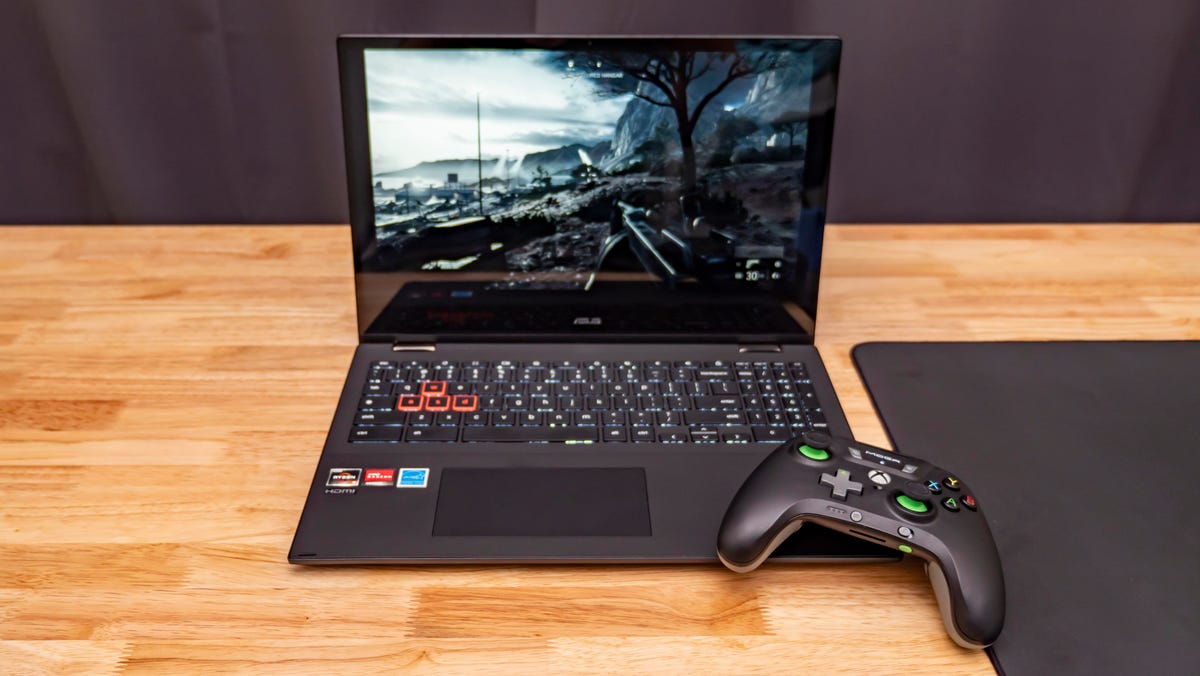
Today's Chromebooks like the Asus CM5 are ready for playing cloud gaming services, Android games and even Linux games.
Josh Goldman/CNETWhat is a good Chromebook?
Several years ago, all Chromebooks were pretty much the same regardless of what company made them. Now, there's a far greater variety of laptops and two-in-ones -- convertibles and tablets -- to take advantage of Chrome OS's current capabilities. You'll still find more sizes and styles when it comes to Windows laptops, especially if you need top processing and graphics performance, but the variety of options is much better than in the past.
If you're just after a good, basic experience with a Chromebook, the small, lightweight OS has minimal hardware requirements and the same goes for web apps. Having a faster, higher-end processor, more memory and greater storage for files and apps will help keep demanding multitaskers moving along; an Intel Core i-series or AMD Ryzen processor, 8GB of memory and a 128GB SSD for storage will take you far but certainly drives up the cost. Here's what I recommend when I'm asked what basic Chromebook specs to look for:
- Intel Celeron or Pentium, Qualcomm or MediaTek processors
- 4GB of memory
- 64GB of storage
- Full HD (1,920x1,080-pixel) display
There is flexibility with these recommendations. You can get a 1,366x768-resolution display, for example, but the cheap ones used in low-end Chromebooks look particularly soft next to full-HD models. And you can get by with 32GB of onboard storage as long as there's a microSD card slot to supplement it or you don't plan to download a lot of Android apps. Unlike a regular laptop, a Chromebook relies more on cloud storage for files rather than local storage. It's also worth noting that many times storage and memory are soldered on and can't be upgraded after the fact so you might want to plan ahead.
Regardless of what Chromebook you buy, before you buy it you should find out the device's Auto Update Expiration date, or AUE. Currently, non-Google hardware is only supported for so long before it stops receiving Chrome OS and browser updates, including those for security. For models released now, the date is roughly seven to eight years from the initial release of the device, but that's not always the case. Google maintains a list of AUE dates for all models and you should check it before you buy a Chromebook, new or used.
Do Chromebooks need an internet connection?
When Chromebooks first launched they basically became paperweights when they were offline -- a real issue if you were in the middle of editing an important document you suddenly couldn't save because your web connection dropped. Things have thankfully gotten better as Google improved offline capabilities and common apps like Netflix, YouTube and Spotify have offline options as well.
Read: Best VPNs for 2022
For a regular laptop, being offline is a little less of a problem since you're using installed software that saves to internal storage. While neither experience is great offline these days, Chromebooks are not a great choice if you're not willing and able to be online most of the time. On the upside, Google has made it very easy for Android users to turn their phones into instant mobile hotspots and to have Chromebooks and Android devices work better together.
Are Chromebooks cheap?
Because of the low hardware requirements of Chrome OS, not only can Chromebooks be lighter and smaller than the average laptop, they're generally less expensive, too.
New Windows laptops for $200 are few and far between and, frankly, are rarely worth buying. Finding a good $200 Chromebook, on the other hand, is pretty easy to do. And while spending more will get you better build quality, more features or faster performance, even these premium Chromebooks typically start between $400 and $500, but can easily run more than $1,000 depending on your needs.
With Windows laptops, you typically need to spend $700 or more to get a thin, lightweight model with decent performance and battery life that will hold its performance for years to come.
The simplicity of a Chromebook can't be beat. If everything you do can be done in a web browser or with web or Android apps, there's little reason not to go with a Chrome device. Although with Android, Linux, Parallels and VMware support, you can do much more today than when they first arrived in 2011.
Read our Acer Chromebook Spin 713 (2021) review.
With a broad range of designs, sizes and styles that can be configured with all kinds of components and available with prices going from a couple hundred dollars to thousands, a Windows or Mac laptop offers greater variety in performance and use, especially if you want to easily use software or play games only available on those operating systems.
Source
Tags:
- Whats The Difference Of Chromebook Vs Laptop
- Whats The Difference Of Chromebook Vs Laptop
- Chromebook Vs Traditional Laptop
- Chromebook Vs Windows Laptop
- Chromebook Vs Laptop For Students
- Chromebook Vs Laptop
- Chromebook Vs Laptop Comparison Chart
- Chromebook Vs Laptop 2016
- Chromebook Vs Macbook
- Chromebook Vs Netbook
- Chromebook Vs Windows 11
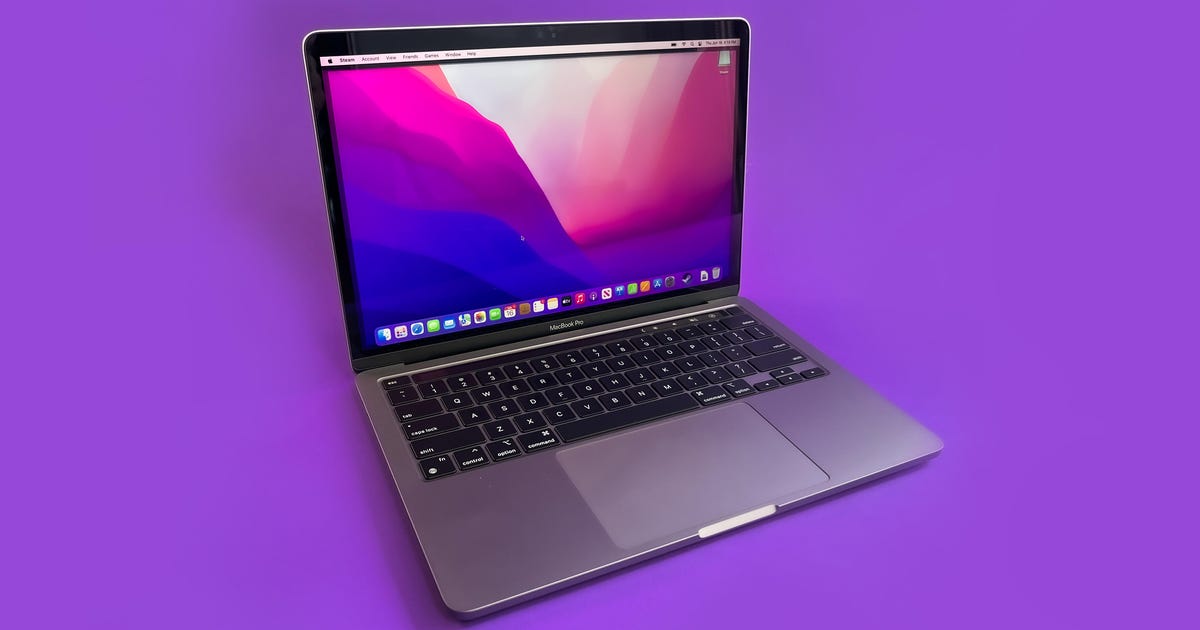
MacBook Pro M2 13-Inch Review: Familiar Design, New Apple M2 Chip
"What a strange-looking MacBook." That was my first thought when I first saw the 13-inch MacBook Pro with the new M2 chip at Apple's headquarters in Cupertino during WWDC 2022.
There wasn't anything particularly strange about it -- it looked like the last several models of 13-inch Apple laptops, both Pro and Air. But in the Apple Silicon era, I've become far more used to the company's new design language, which is built around flat, constructivist designs with sharper angles and a studied minimalism. That same design has since been applied to the 14-inch and 16-inch MacBook Pro laptops, the 24-inch iMac and soon, the new 13-inch MacBook Air.
The M2 Air, with a bigger screen, better webcam and newer design is said to be arriving sometime in the next month. As both 13-inch laptops have the same M2 chip and a similar price, I won't consider this a complete review until I can test and compare the two systems side by side.
This M2 MacBook Pro, despite being the newest MacBook you can buy right now (until the revamped MacBook Air goes on sale next month), has a gently rounded edge that tapers ever so slightly on the front side. It's a throwback design that can be traced back more than a decade, starting with the first Retina-display MacBook Pro I reviewed in 2012 to the current Touch Bar design, which I first reviewed in 2016.
Apple M2 vs. M1 vs. M1 Pro vs. M1 Max vs. M1 Ultra
| | Apple M1 | Apple M2 | Apple M1 Pro | Apple M1 Max | Apple M1 Ultra |
|---|---|---|---|---|---|
| Total CPU cores | 8 | 8 | 8 or 10 | 10 | 20 |
| Performance cores | 4 | 4 | 6 or 8 | 8 | 16 |
| Efficiency cores | 4 | 4 | 2 | 2 | 4 |
| GPU cores | 7 or 8 | 8 or 10 | 14 or 16 | 24 or 32 | 48 or 64 |
| Neural engine cores | 16 | 16 | 16 | 16 | 32 |
| Maximum memory supported (UMA) | 16GB | 24GB | 32GB | 64GB | 128GB |
| Peak memory bandwidth (GBps) | n/a | 100 | 200 | 400 | 800 |
| ProRes accelerators | None | 1 | 1 | 2 | 4 |
| Available in | MacBook Air (2021), iPad Pro (5th gen), iMac 24 (2021), Mac Mini | MacBook Air (2022), MacBook Pro 13 (2022) | MacBook Pro 14, MacBook Pro 16 (2021) | MacBook Pro 14, MacBook Pro 16 (2021), Mac Studio | Mac Studio |
In fact, it looks just like the 13-inch MacBook Pro that was part of Apple's first wave of M1-chip Macs in late 2020. Same body, same camera, same limited ports, same Touch Bar. Yes, this remains the last holdout of the Apple Touch Bar, a clever-but-underused second screen that's fallen out of favor.
And that's exactly what this system is: The 2020 13-inch MacBook Pro, with the initial M1 chip swapped out for the new M2 chip. That makes it Apple's most powerful 13-inch laptop, and it will probably edge out the otherwise similar new M2 MacBook Air because its active cooling allows it to run at higher temperatures.
Read more: MacBook Air M2: We Tried Out Apple's New Laptop
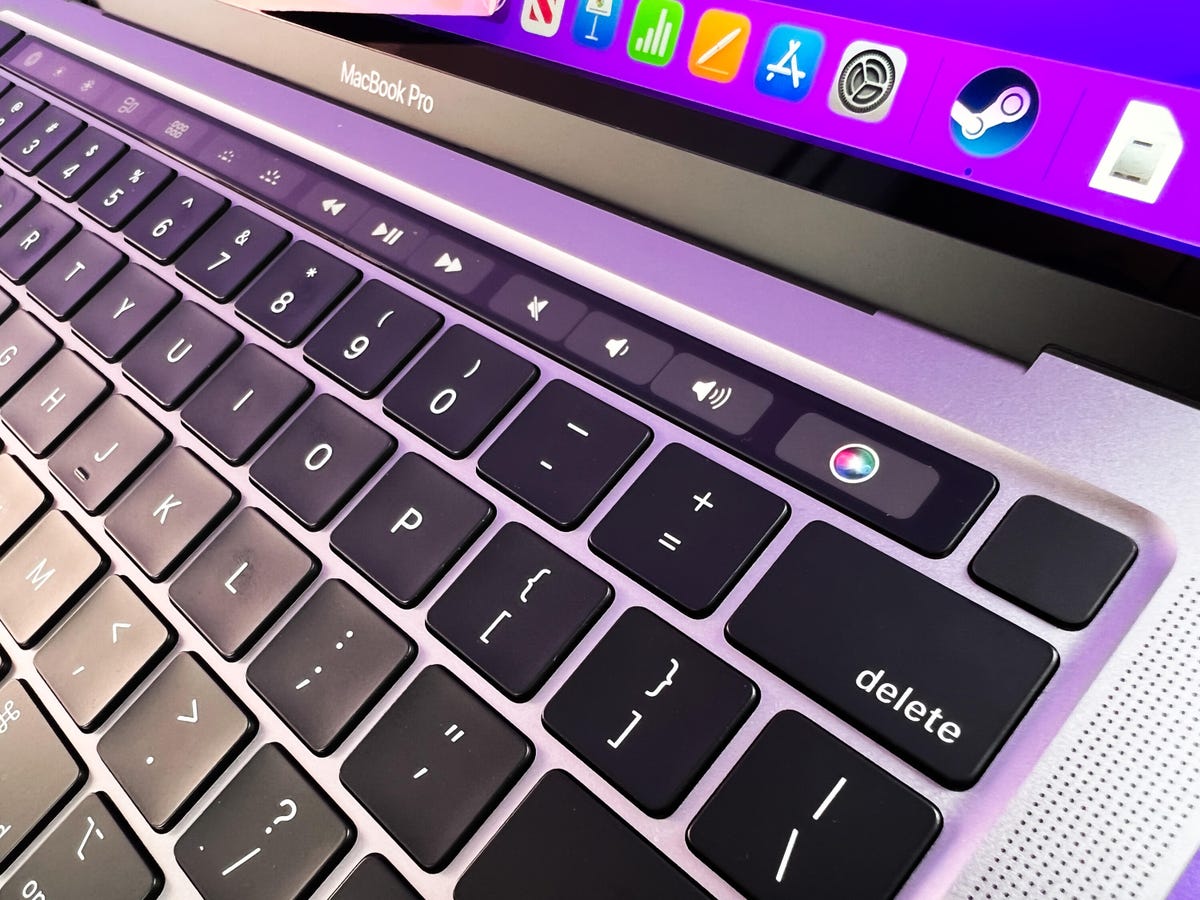
Where the M2 fits in the lineup
But despite the hype, the M2 sits in a confusing spot in the Apple silicon hierarchy. It sits above the original M1 chip (which was available in two versions with different numbers of graphics cores), but below the M1 Pro, M1 Max and M1 Ultra. The M1 Pro and M1 Max are available in the 14-inch and 16-inch MacBook Pro. The M1 Ultra, essentially two M1 Max chips side by side, is only available at the moment in the new Mac Studio desktop.
Which of these chips will show up in an eventual revamp of the Mac Pro desktop, or a new big-screen iMac, is unknown.
In the original M1 Mac lineup, I had the hardest time reconciling the 13-inch MacBook Pro with a target audience. It was more expensive than the practically identical M1 MacBook Air, while offering the Touch Bar, active cooling and a slightly brighter screen. For most people, the Air—even with a few upgrades—was a better choice. There's a reason I call the MacBook Air the most universally useful laptop you can buy.
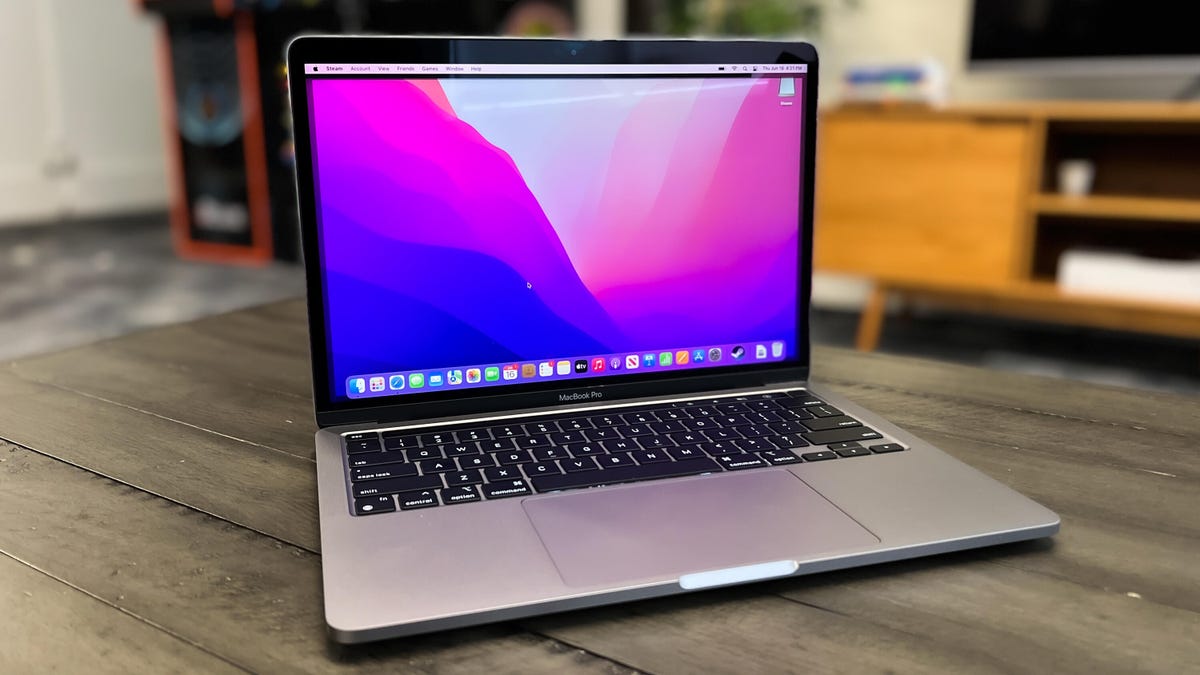
With the new M2 MacBook Air right around the corner, the 13-inch MacBook Pro is an even tougher sell. The M2 Air has the newer design (plus cool colors), a slightly larger liquid retina display, now just as bright as the Pro, and a much-needed full HD webcam. This leaves the 13-inch MacBook Pro as the only Mac left with a substandard 720-pixel resolution webcam.
But there are some reasons you may still want the 13-inch MacBook Pro over either the new MacBook Air or the much-more-expensive 14- or 16-inch MacBook Pro. We outlined the most obvious reasons here, and they include:
- It's the last opportunity to get a Touch Bar MacBook.
- It's the smallest MacBook with the longest battery life (at least until we test the new Air model).
- It provides platform continuity for your company or creative shop.
MacBook math: M2 Mac price comparisons
The M2 MacBook Air is currently $1,299 (£1,349, AU$1,999) to start, compared with $1,199 (£1,249, AU$1,899) for the MacBook Pro. Both base models include 8GB RAM and 256GB of storage. That's a much less expensive way to get into a MacBook Pro than the 14-inch or 16-inch Pro models, which start at $1,999 and $2,499.
We tested the new M2 MacBook Pro and compared it to the nearly identical M1 13-inch MacBook Pro, as well as the 14-inch MacBook Pro with an M1 Pro chip. As shown in the charts below, the M2 is a notable bump over the M1, but not as powerful as the next chip up on the chain, the M1 Pro. The last generation of Intel MacBook Pro was far behind, while a new (and expensive) premium Windows laptop from Razer with a 12th-gen Intel Core i7 and an Nvidia 3070Ti GPU was also faster.
While we won't know for sure until we can test the M2 Air, based on our previous testing, I expect only minor performance differences between the M2 laptops. Both M2 laptops top out at 24GB of RAM and 2TB of storage.
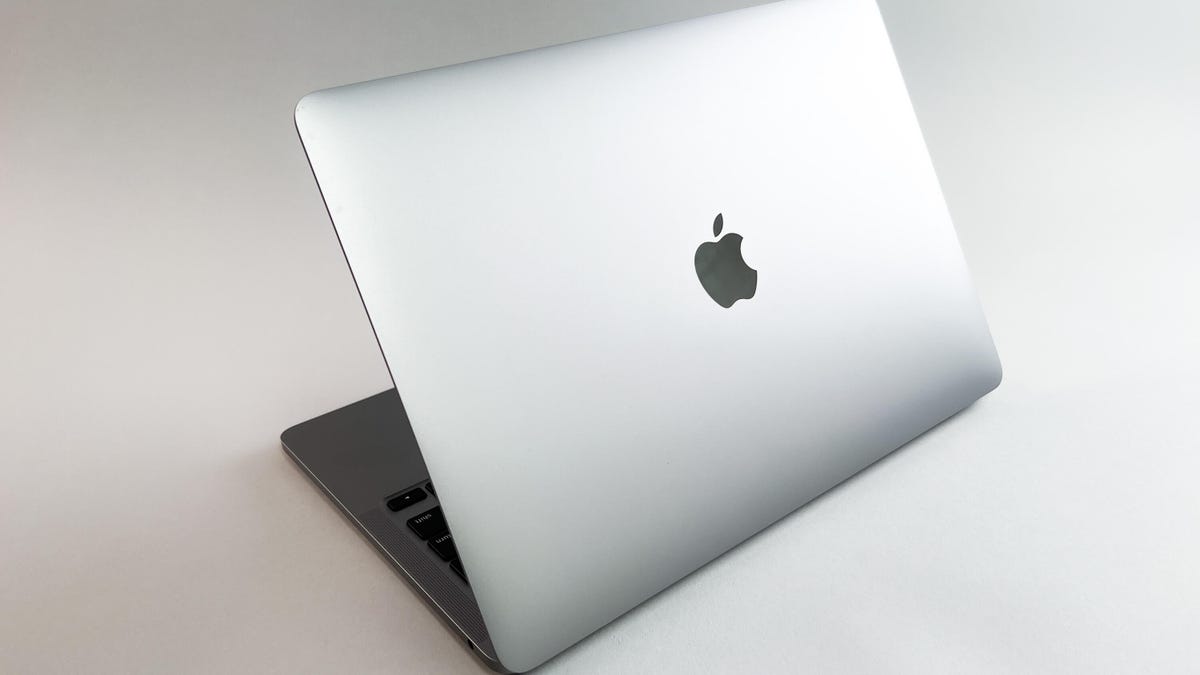
In my hands-on experience, it felt like exactly what it is -- a modest internal bump to the M1 version. When the M1 chips launched, I was excited that I could easily edit and play back 4K video clips, only running into a little stuttering when I applied real-time effects and color correction in Premiere. The M2 version was even better, but not as good as the video editing we tried on our MacBook Pro and Mac Studio systems, using the M1 Pro and M1 Max chips.
I love the new MacBook Air design and its upgrades to the display and webcam. I suspect the 13-inch Pro will appeal to only a very specific subset of shoppers, such as those who want the better cooling and who want to jump into the Pro line without spending $2,000 or more.
For everyone else, I'd suggest waiting to see what the M2 version of the MacBook Air can do when it arrives sometime in July.
Originally published June 22, 2022.
M2 MacBook Pro performance testing results
Geekbench 5 (multicore)
Apple MacBook Pro (14-inch M1 Pro 2021)
Razer Blade 15 (2022)
Apple Macbook Pro (13-inch, M2, 2022)
Apple Macbook Pro (13-inch M1, 2021)
Apple MacBook Pro (13-inch, Intel, 2020)
Note:
Longer bars indicate better performanceGeekbench Metal
Apple MacBook Pro (14-inch M1 Pro 2021)
Apple Macbook Pro (13-inch, M2, 2022)
Apple Macbook Pro (13-inch, M1, 2020)
Apple MacBook Pro (13-inch, Intel, 2020)
Note:
Longer bars indicate better performanceCinebench R23 (multicore)
Apple MacBook Pro (14-inch M1 Pro 2021)
Razer Blade 15 (2022)
Apple Macbook Pro (13-inch, M2, 2022)
Apple Macbook Pro (13-inch, M1, 2020)
Apple MacBook Pro (13-inch, Intel, 2020)
Note:
Longer bars indicate better performance3DMark Wild Life Extreme
Razer Blade 15 (2022)
Apple MacBook Pro (14-inch M1 Pro 2021)
Apple Macbook Pro (13-inch M2, 2022)
Apple Macbook Pro (13-inch, M1, 2020)
Note:
Longer bars indicate better performanceJetStream2 (Safari)
Apple MacBook Pro (14-inch M1 Pro 2021)
Apple Macbook Pro (13-inch M2, 2022)
Apple Macbook Pro (13-inch, M1, 2020)
Apple MacBook Pro (13-inch, Intel, 2020)
Note:
Longer bars indicate better performanceSystem configurations
| Apple MacBook Pro (13-inch M2, 2022) | MacOS Monterey 12.4; Apple M1 8-core chip; 16GB RAM; Apple 10-core GPU; 1TB SSD |
|---|---|
| Razer Blade 15 (2022) | Microsoft Windows 11 Home; 2.4GHz Intel Core i7-12800H; 16GB DDR5 4,800MH; 8GB Nvidia GeForce RTX 3070Ti; 1TB SSD |
| Apple MacBook Pro (14-inch, M1 Pro 2021) | MacOS Monterey 12.4; Apple M1 Pro 10-core chip; 32GB RAM; Apple 16-core GPU; 1TB SSD |
| Apple MacBook Pro (13-inch, M1, 2020) | MacOS Monterey 12.4 Apple M1 8-core chip; 16GB RAM; 8-core GPU; 1TB SSD |
| Apple MacBook Pro (13-inch, Intel, 2020) | MacOS Monterey 12.4; 2GHz Intel Core i5-1038NG7; 16GB RAM; 1,536MB Intel Iris Plus Graphics; 512GB SSD |
Source
Tags:
- Macbook Pro 13 M2 2022
- Macbook Pro 13 M1 Vs M2
- M2 14 Inch Macbook Pro
- Macbook Pro M2 13 Inch
- Macbook Pro 13 Inch M2 2022
- Macbook Pro 13 M2
- Macbook Air M2 Vs Macbook Pro 13
- Macbook Pro 13 M1 Vs M2< /li>
- Macbook Pro 13 M2 Release Date
- Macbook Pro M2 13 Pouces
- Macbook Pro M2 13 Inch Case
- Macbook Pro M2 Release Date
Blog Archive
-
▼
2022
(107)
-
▼
December
(64)
- Razer Blade 14, 15 And 17 Boosted With 12th-gen In...
- S21 Ultra Vs. S20 Ultra: Samsung Galaxy Camera Sho...
- TikTok Dominated 2021 As The Year's Hottest App
- Student Loan Forgiveness: How To Apply To Get Up T...
- Chromebook Vs. Laptop: What Can And Can't I Do Wit...
- MacBook Pro M2 13-Inch Review: Familiar Design, Ne...
- Ford Bronco Raptor RLE Brings The GOAT To Rocket L...
- Surprise! Netflix Adds A Bonus 'Sandman' Episode
- Halo TV Series Gets Explosive First Trailer
- Snap Reportedly Done With Its Camera Drone Pixy
- Surprising Tech And Gadgets You Can Get On Amazon ...
- You Can Grab This Mini Drone For Just $36 Right Now
- AMD Radeon RX 6700 XT Launches For Fast 1440p Gami...
- Best Debit Cards For Kids And Teens In September 2...
- Red Alert! New Honda Civic Type R Coming Next Year...
- Best Crypto Credit Cards To HODL In September 2022
- Would You Spend $10K On NFT Stick Figures? Lots Of...
- Panasonic To Start Tesla 4680 Cell Production In M...
- ProRes Video On The IPhone 13 Pro: What It Is And ...
- Apple Notes: How To Set Up Passwords For Extra Pri...
- Deathloop PC Users Are Having Strange Technical Tr...
- Coinbase, Crypto.com Announce Layoffs As Market Tu...
- Acer Adds AMD Ryzen Power To Budget Gaming Desktops
- Snapchat: OK, OK, We're Sorry
- Asus ROG Flow X13 With XG Mobile Review: Almost Th...
- Moto G Stylus 5G Review: Great Specs For $500 But ...
- Record-holding Batman Costume Stocked With 23 Work...
- Game Of Thrones Studio Tour Opens In February To L...
- QR Code Scams Are On The Rise. Here's How To Avoid...
- Save Up To 81% On VPN Plans From Surfshark, Expres...
- Four Samsung Galaxy Tab S8 Features We'd Love To S...
- Best Wi-Fi 6 Routers Of 2022
- Relax, No One's Forcing You To Upgrade To Windows 11
- 'Hocus Pocus 2' Trailer Resurrects Bette Midler's ...
- Stonic: Kia's New Crossover Packs Weird Name, Rugg...
- Motorola Wants To Turn Your Edge Plus Into A WFH M...
- Best Cheap Phones For 2022: IPhone, Galaxy, Pixel ...
- GoPro Hero3+ Silver Edition Review: GoPro Design, ...
- Apple Reportedly Testing Next-Gen M2 Chips In New ...
- 2020 Honda CR-V Hybrid Earns Top Safety Pick From ...
- Google's Cheaper Pixel 6A Is Coming Soon, And It L...
- Don't Make These 8 Mistakes If You Want A Quick Ta...
- Apple Reportedly Testing Next-Gen M2 Chips In New ...
- ​Mozilla Builds A Future Beyond Firefox By Buyin...
- Best Minimalist Wallet For 2022
- Galaxy A02S, A03S, A12 Review: Samsung's Under-$20...
- Asus ROG Zephyrus Review: A Gaming Laptop That Lif...
- Save Up To 35% On These Great Smartwatches During ...
- Best 'Buy Now, Pay Later' Apps For August 2022
- Kim Kardashian, Floyd Mayweather Jr. Sued For Alle...
- Getting An ADHD Diagnosis Has Gotten Easier Online...
- All The 'Predator' Movies Ranked: From 'Prey' To '...
- Best Dell Laptop Deals: Save $700 On XPS 15 Or XPS...
- Sony Action Cam Review: Good, But Not Without Its ...
- Instagram Testing New Tool For Age Verification
- World's Biggest Drone Will Send Satellites Into Sp...
- How To Start Meditating And Actually Stick With It
- Splatoon 3 Splatfest World Premiere - Demo Times, ...
- Best Buy Wearable Sale: Save Up To $100 On Apple W...
- Lawmakers Call On Google To Fix Misleading Results...
- Intel's Next-gen Raptor Lake PC Chip Is Due For 20...
- DJI Mavic Mini An Ultralight Drone With 2.7K Camer...
- Viking Horde Malware Attacks Android Devices
- 'Right To Repair' Legislation Heading To California
-
▼
December
(64)
